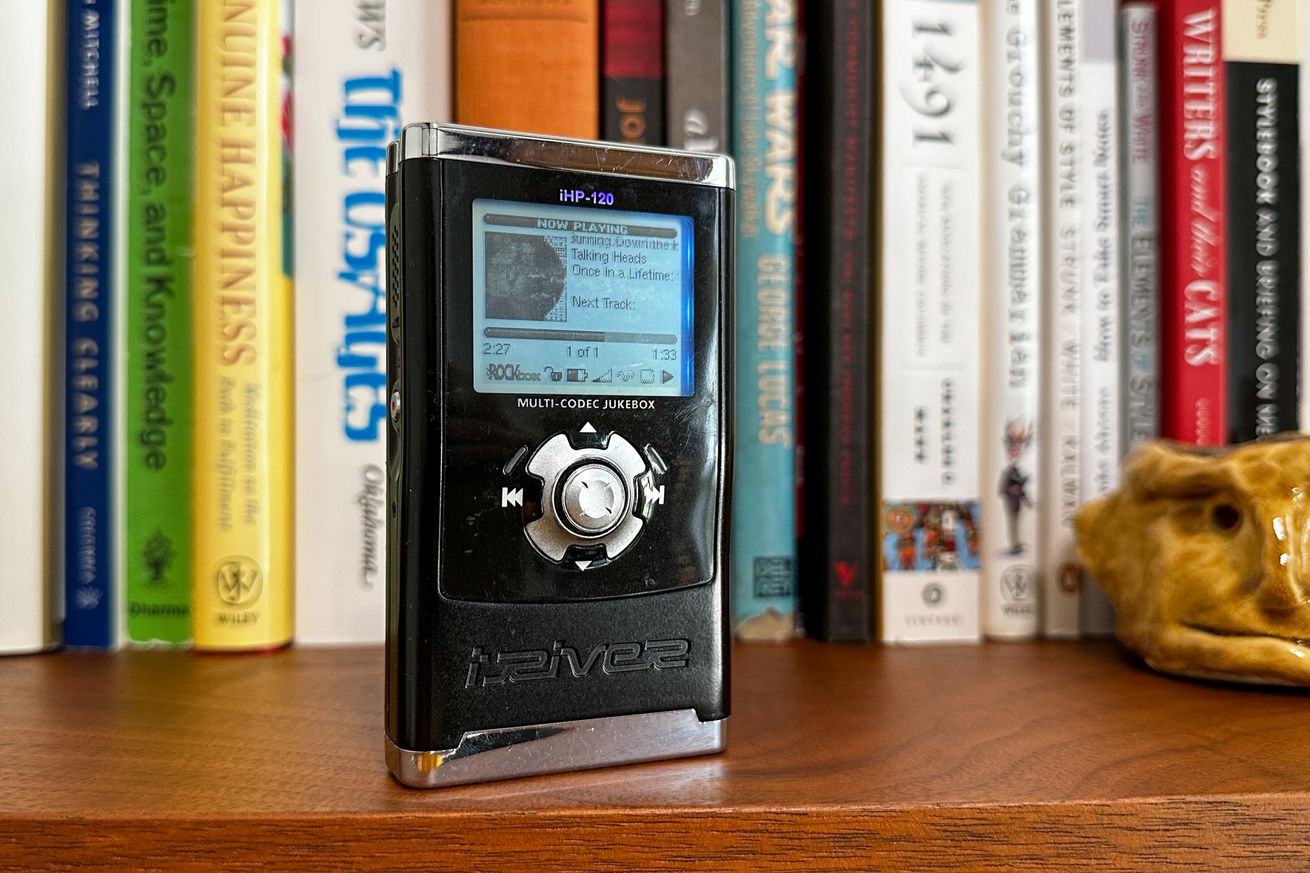
My first MP3 player had everything I needed
The spring of my freshman year of college, my mom sold my drum set. I used the money to buy an MP3 player. Sorry. A multi-codec jukebox.
There is a certain type of person who, when faced with a sleek, friendly, easy-to-use Apple product, will rail on about all the features it doesn’t have, all the things you can’t do with it, all the ways the walled garden is a trap. This person has existed since the dawn of time. I used to be that guy. I still am, sometimes, but I used to be, too. And so, in the spring of 2004, when the iPod had been out for two and a half years, I spent $330 on an iRiver iHP-120. Rolls off the tongue, doesn’t it?
The iHP-120 was so physical. Where the iPod was gray and white, the iRiver was a black brick with silver rails and visible screws. It had a 1.8-inch 20GB spinning hard drive. It had a joystick on the front. It had four physical buttons and a lock slider on the sides. It had an FM radio. It had an equalizer button. It had a 3.5mm headphone jack plus a pair of optical / analog combo jacks: one for line-in, one for line-out, which meant someone else could plug in a second pair of headphones. It came with a lapel mic and a wired remote. The remote had an LCD screen, headphone jack, and three control dials, so you could leave the MP3 player in your backpack, fish the remote out, and clip it to the backpack strap.
Is this too much stuff? Maybe! The wired remote, in particular, tended to add a bunch of static, so I didn’t use it much. Can’t say I ever used the optical ports, either.
But I used the MP3 player constantly. Not just for listening to MP3s (it also supports lossless FLAC and Ogg Vorbis!) but also to record interviews for my journalism classes. I recorded my friends telling mildly scandalous stories (on the record! not secretly). I dragged and dropped whole collections of dubiously tagged MP3s from my friends. Before I had a laptop, I used it to transfer my schoolwork between the library computers and my dorm room desktop.
I got a gummy case for it, with a belt clip. I joined a forum about it. At some point, I replaced the iRiver firmware with Rockbox. Some folks replaced the hard drives on theirs with CF card adapters and later replaced the CF cards with SD-to-CF adapters. I never quite got that far.
I’d almost forgotten about scarcity
Eventually — either in late 2006, when I got one of those Windows Mobile smartphones with the sliding keyboards, or in 2008, when I got an iPhone — I stopped carrying the iRiver everywhere, but I hung onto it. Its hard drive became a fossil record of my musical taste in the years before streaming: a 4GB “various artists” folder, just a ton of Elliott Smith and Mountain Goats albums, a collection of mashups from my first year in San Francisco. The 30 best-rated albums on Metacritic in 2008, regardless of genre. A recording of my friend Bill talking about his time in the Jesus People commune. All those recorded interviews and essays. Every so often, I’d pull it out and let the memories wash over me.
I’d almost forgotten about scarcity. My kids barely interact with physical media, and it’s hard for them to understand the idea of, like, when I was a kid, if you didn’t have a physical copy of something — an album on cassette or CD, a movie on VHS or (later) DVD — and it didn’t happen to be on, you just didn’t have access to it. In high school, I carried a portable CD player and one of those enormous binders of CDs. When I got the iRiver, I filled it with those same CDs, which I’d (very slowly!) ripped to my computer, plus whatever MP3s I’d borrowed from friends’ computers and the dorm network. It was basically a more portable version of that binder full of CDs. I listened to what I had, and what I had stayed on there. It was a totally different ball game than the overabundance we take for granted today.
The other day, I fished the thing out of a drawer and turned it on again. It worked fine, but all the files were gone. I figured I must have deleted them at some point. I felt weirdly sad. Then I hit the “rebuild database” option in the menu. It found a thousand files in the recycle bin. Nothing had been lost at all.
Photography by Nathan Edwards / The Verge

